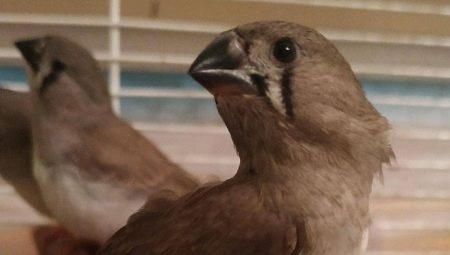Amadin is a very common breed of birds that was bred artificially. Unfortunately, information about the ancestors of this bird is so contradictory that they have not yet been established. Among the possible ancestors, there are Amadines, Sharp-tailed, Chinese. Unlike the ancient snow-white Japanese amadins, today the color variety is impressive. This unpretentious bird, which can be raised independently, has been in constant demand all over the world for many years. After all, she does not need to fly often, she patiently gets along with her neighbors.
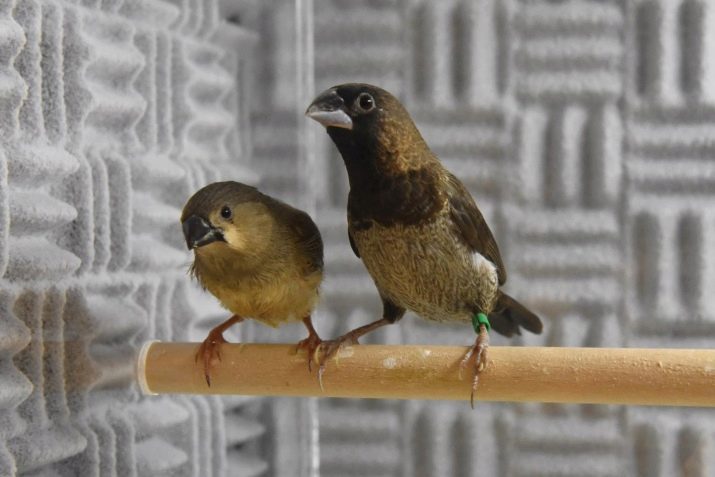
Bird features
Amadins have a thick beak curved by an arc, plumage of a dense type. The color can be anything - mostly colorful, colorful birds, with contrasting shades of feathers. Females have a faded color as well as young animals, males are more catchy. Crested representatives are found. The breed belongs to the family of finch weavers.
The size of the birds is small, and the colors of the Japanese may be different:
- brown top;
- the rest of the body is grayish or snow-white;
- there are representatives of a monochrome color - reddish, white, yellow;
- Considering several hundred years of breeding, the Japanese have quite a few varieties that differ in various combinations of shades;
- Often you can observe the asymmetry of the color of the spotted type.
The beak of the birds has an original shape and color: the top is black and blue, the bottom is light. The colors by gender of the Japanese are indistinguishable, but the singing is different.
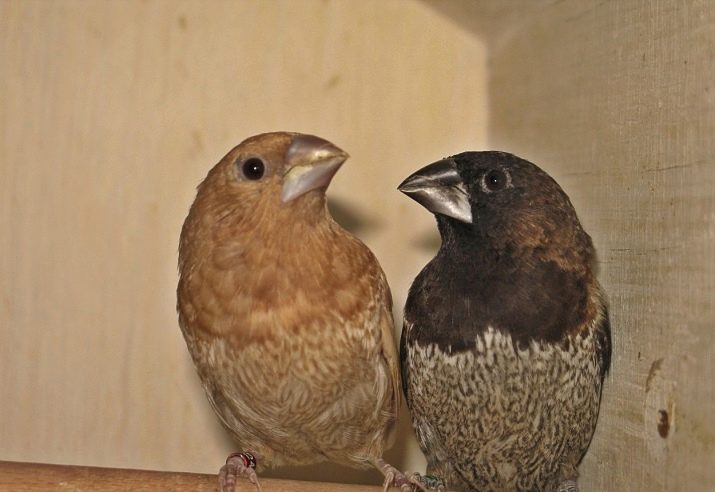
This breed very accommodating and undemanding in carebesides, she perfectly feeds weaver chicks, if necessary.
Specific traits:
- loves bird society;
- temper is calm, uninviting;
- gets along well with their own kind in the same cell;
- during nesting, it is necessary to separate the birds in pairs.
White Japanese are weaker in nature, have fragile health, less fertility, grow more slowly, often have physical disabilities.
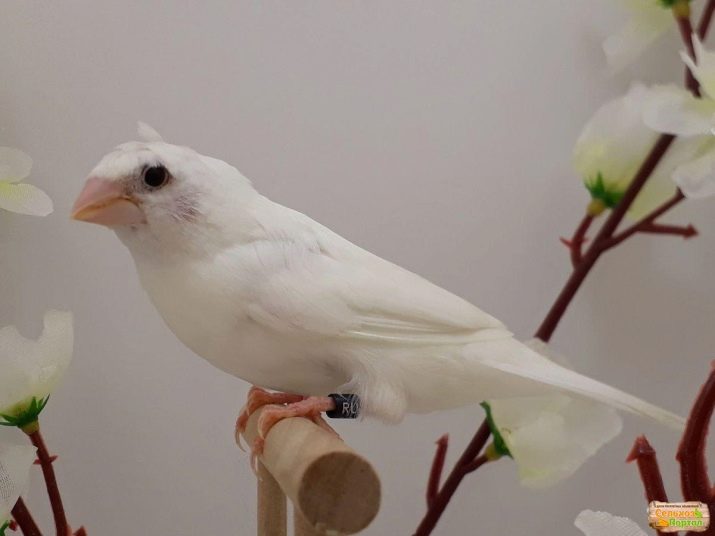
In the XX century, the crested variety of the Japanese was bred. Crests can vary in color and shape:
- beam-shaped;
- lushly thick;
- double type.
And more recently, kinky Japanese were bred. They have curled plumage in the chest, back, shoulders.
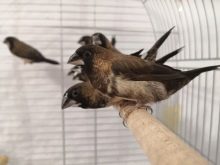
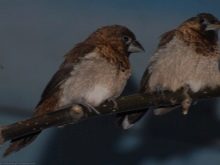
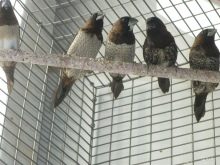
Growing conditions
Before deciding on the home maintenance of amadine, it is necessary to familiarize yourself with the conditions for its cultivation. Buying a bird is better at a pet store: evaluate the color, choose the individual you like. If you decide to engage in breeding, the birds should not be more than a year, and it is better to postpone the purchase for the autumn period. Be sure to appreciate the appearance - it must be healthy. Refuse to buy too emaciated, disheveled, bald birds. They transport birds in a cage for transportation, therefore make sure that it is neither cramped nor too large; cover it with a cloth.
Having brought the bird home, let it get used for a while. Do not put in a common cage, as quarantine is required. At first, amadine is kept separately to identify health problems so that the sick bird is not able to infect others.
In the early days, appetite, behavior, and stool in an amadine are evaluated. Ideally, feces are given for analysis. After a month, if no suspicious signs are detected, you can plant the bird to its neighbors.
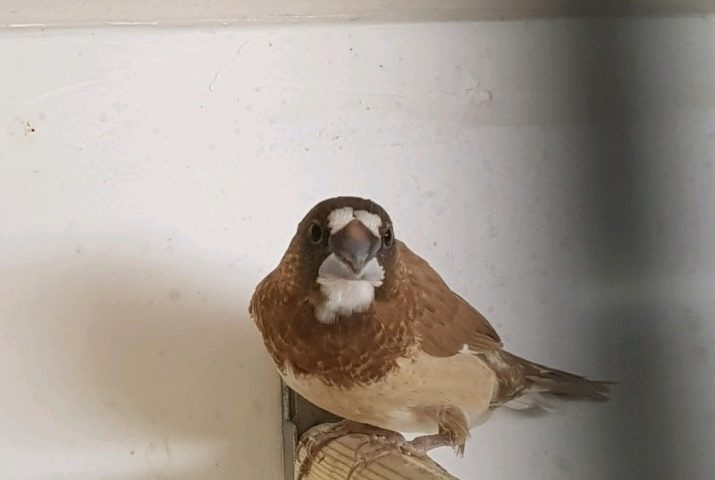
Amadinov should not be taken out of the cell without special need. They are seriously scared, and careless movement can lead to the death of the bird. It is better to move birds from one aviary to another, catching birds with a net in the dark. The adaptation of the Japanese takes place fairly evenly, calmly, if the conditions of detention are observed: the birds are warm, dry, well fed and shelter from drafts. Birds can be kept in cages or enclosures.

Cells:
- a very convenient option for apartments;
- can be metal, wooden, combined;
- the optimal location of the door is just below the poles so that the bird does not accidentally fly out when serving food or drink;
- it is necessary to equip a retractable type pallet;
- size is selected based on the number of birds, their size;
- the height of the cell should be greater than the width
- round, rhomboid and trapezoid cells are not suitable for this breed;
- do not buy cages with decor such as balconies, windows, towers.
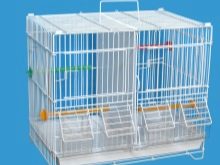
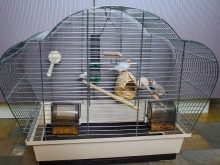
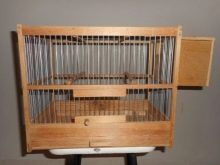
Aviaries:
- the best option for keeping birds;
- size and shape may vary;
- in this room, the conditions for birds are close to natural;
- in open-air cages, amadins grow healthier;
- installed in a bright corner of the room;
- it is necessary to equip it with wooden frames, cover it with boards;
- the size of the doors should allow a person to calmly enter;
- Do not exceed the rate of settlement.

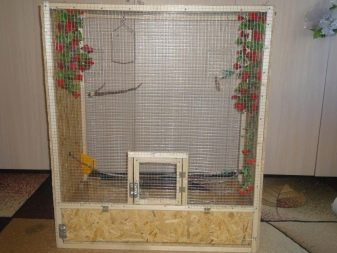
Proper care
The Japanese are quite peaceful, unobtrusive breed, and the cage can be safely placed at any height. Closer to the cage does not affect the mood of the bird. Do not place cells near heating appliances, if the room is heated by a stove or fireplace, do not place the cell under the ceiling.
It is important to keep the birds clean:
- dampness, dirt are very harmful to amadins;
- clean the cage or aviary must be no less than a day;
- the dirt from the poles is cleaned with a knife, then they are treated with boiling water;
- water and feed containers are washed every day with soap and hot water, wiped dry;
- in heat, water changes frequently;
- Do not place containers for water and drink near, and do not place them under the perches.

Amadins love water and enjoy swimming. Therefore, periodically it is necessary to give them such an opportunity by hanging a bath with a small amount of water at room temperature in the cell.Water procedures have a good effect on the health of birds, on the condition of their feathers. For birds of this breed, sunlight is important, a lack of lighting should not be allowed. Otherwise, the metabolism may be disturbed in birds, and a number of diseases will occur. In summer, you need to put the cage on the street for about 40 minutes a day.
This breed does not like cold and damp. The temperature of the content in the room should not be lower than + 15 ° C, the optimal range is from +15 to + 25 ° C.
Overheating is as dangerous to birds as cold.
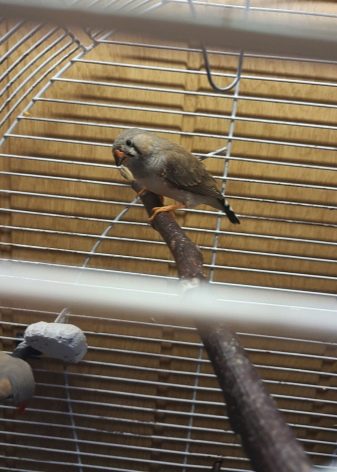
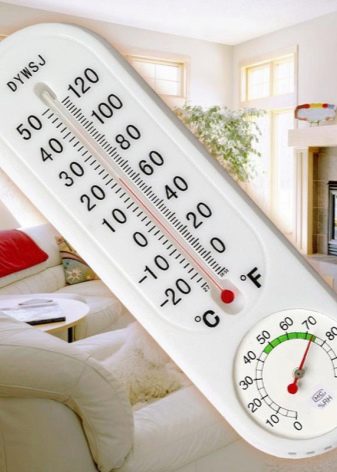
The premises should contain the following equipment:
- feeding troughs;
- drinkers;
- jar for mineral type food;
- nesting device;
- perches.

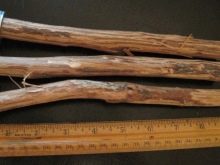

The best feeders and drinking bowls - glass, plastic, porcelain. It is better to refuse products from clay, copper, wood - they are less hygienic. The poles are made of soft wood, well suited:
- Linden;
- aspen;
- willow;
- elder.


The bottom of the cage or the floor of the aviary is covered with litter from:
- sand;
- sawdust;
- shavings;
- paper.
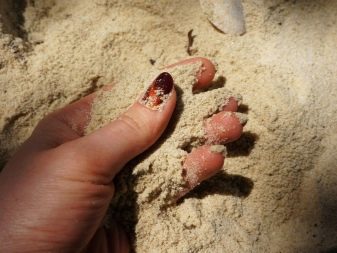

What and how to feed?
In order for the birds to develop well and be healthy, it is necessary to feed them qualitatively and correctly. Balanced feed can be found on sale or made up on your own.
Grain mixtures - the main part of the diet of amadins. They consist of wild and cultivated plants - millet, canary seed, weed seeds, chumiza, mogar. It is important that the seeds are fresh, without the smell of musty.
Animal feed is an additional part of the diet. They consist of maggots, flour worms, fruit flies, insect larvae, minced meat, egg yolk, cottage cheese.
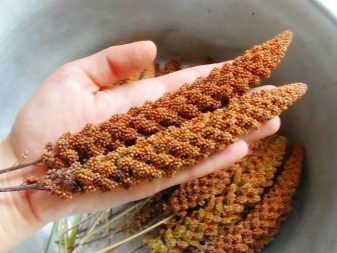
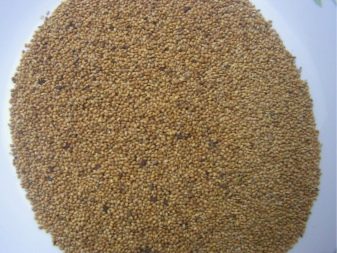
Mild-type food should be trained gradually. They are prepared daily, as they spoil immediately. Such a mixture consists of boiled eggs, grated carrots, cottage cheese, white bread.
The composition of grain mixtures may vary: These include sunflower, oilseeds, and rape.
In captivity, the full range of natural feed for birds is not available. Learning to new types of feed mixtures should occur gradually, increasing portions every day. All types of feed should be fresh.
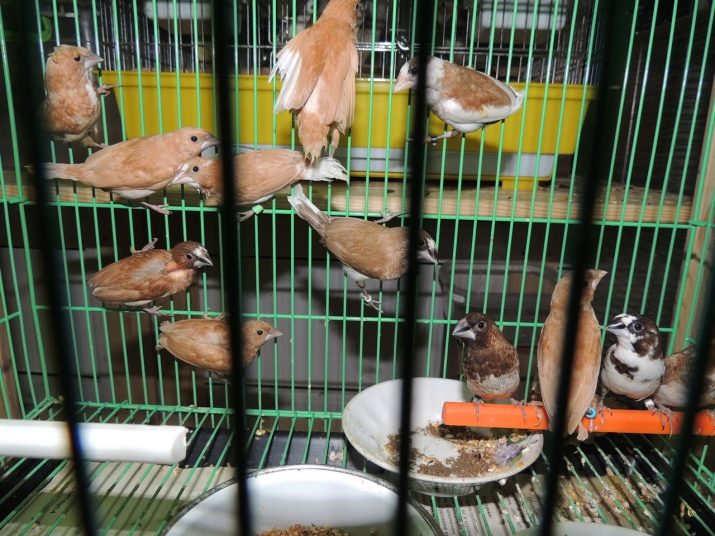
Feeding is organized as follows:
- every morning the whole daily norm of the grain mixture is poured into the container;
- soft feeds are given little by little throughout the day;
- every day birds are given crushed fruits, berries, vegetables, greens;
- the amount of food must be identified independently, since the need for feed is individual for everyone;
- the average norm of a grain mixture per one individual is from one to one and a half teaspoons plus additional types of feed.
During the nesting period, birds are fed a mixture of crackers, carrots with cottage cheese, yolk, dried insects.
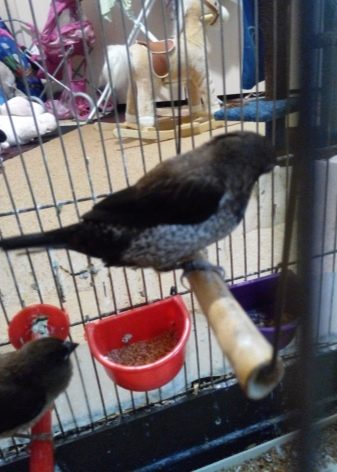

Sexual differences and reproduction
Distinguishing a male amadine from a female is very important if you are planning a breeding. Chicks boys and girls are very similar, distinguish them by singing. Females do not know how to sing, their conversation is limited by peculiar sounds, urges. The males dance when urged, the plumage on the head rises, in addition, they whistle. Breeding amadins is not too difficult, but you need to know the conditions and rules of this process. Reproduction can occur, regardless of the season, the cycle size usually does not exceed 55 days and consists of the following steps:
- preparatory;
- calculation and incubation;
- cultivation;
- disconnecting the chicks.
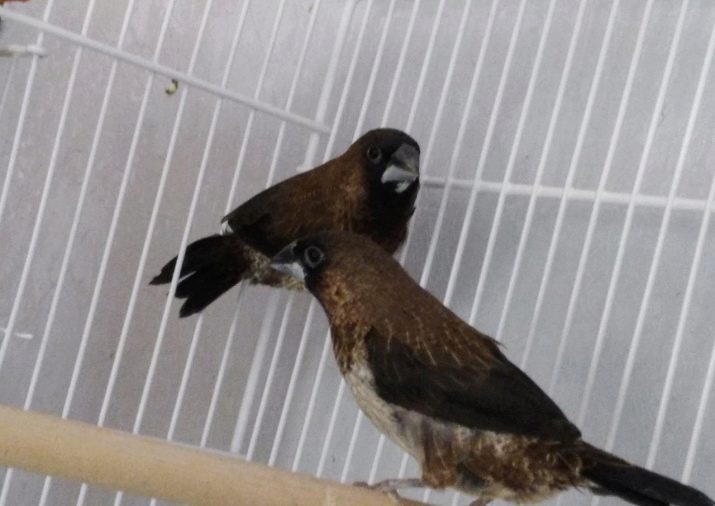
Features of the preparatory phase:
- health check of individuals;
- age, especially females, is taken into account;
- minimum age - 9 months;
- for breeding, it is better to provide a separate room;
- daylight should be artificially increased to stimulate the process up to 16 hours;
- nutrition needs to be diversified by increasing the amount of animal protein;
- a nesting house with material inside must be present;
- add to the diet top-dressing mineral type with a high content of calcium, phosphorus, vitamins;
- hay, coconut fiber are used as material for the interior decoration of the nest.
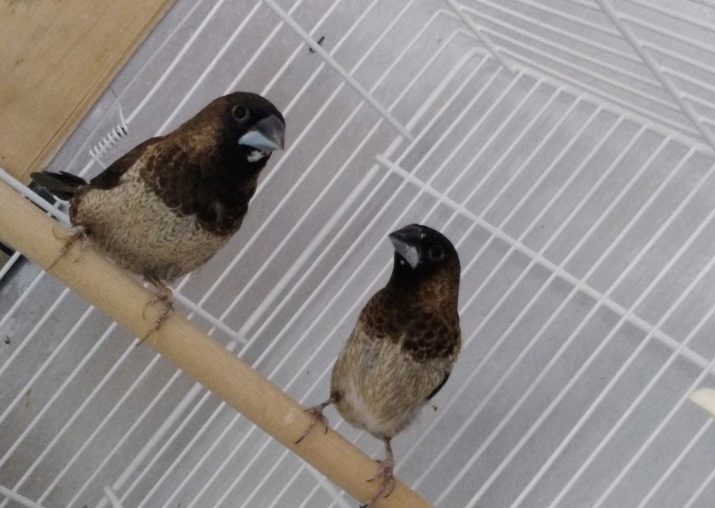
After the birds are accustomed to a new place, mating and laying of eggs takes place. This period may take several days or even a couple of weeks. Egg laying is the most important process, it is necessary to ensure that the fetus does not get stuck in the aisle. This phenomenon is infrequent and leads to death. When the process has begun, it is necessary to put a lamp over the cage, ensuring a high temperature in the room - about + 35 ° C.
Watch for humidity - it should be high. If the egg is not laid for an hour or two, a vaseline or vegetable type oil is carefully introduced into the hole with a pipette. After the postponement, a hatching period begins.
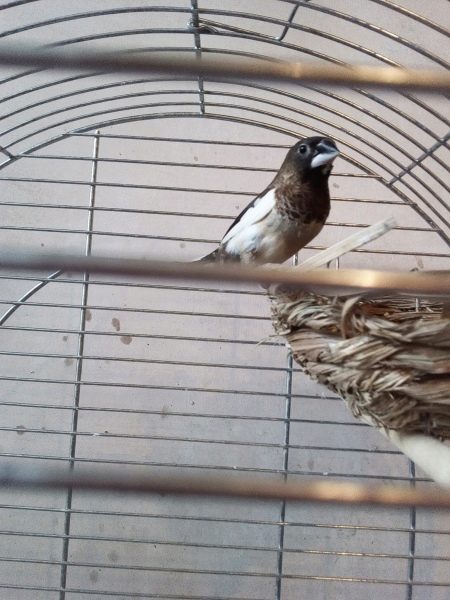
Features of incubation:
- Amadins have an excellent instinct, so there is usually no problem;
- after laying 4 eggs, the process begins;
- during this period, an egg is excluded from the diet;
- the period lasts about two weeks.
Growth and development of chicks:
- hatch naked, blind;
- the egg is again introduced into the diet of the parents;
- green feeds are removed;
- in a week the chicks are already strong, they begin to see, plumage appears in its infancy;
- at 18 days the plumage completely covers the chicks;
- and after 3-4 days they fly out of the nest.
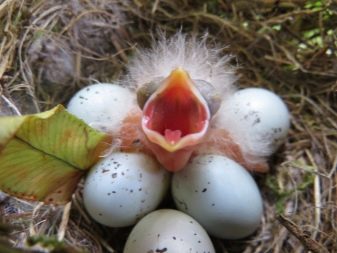
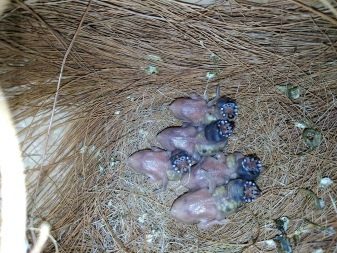
Disconnecting and switching to an independent type of food occurs gradually. At first, parents still feed their children. After a couple of days, the chicks themselves begin to try to peck, after about two weeks they will eat on their own. During this period, a pair of parents may again begin to lay their eggs, so the chicks are a nuisance. Disconnect them in another room.
Birds molt for the first time from one and a half to three months, in the same period, males begin to sing, it is possible to distinguish birds by gender.
After 3, a maximum of 4 breeding periods, the couple needs to rest for about a year. At this time, the house is cleaned, the nest is shortened, daylight hours are shortened, birds are placed in a cage with other individuals. In extreme cases, the couple is separated.
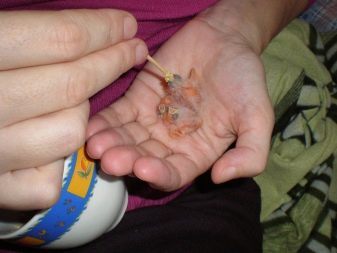
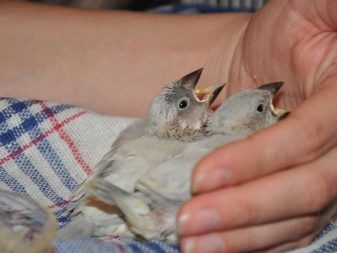
About the features of Japanese Amadins, see below.
